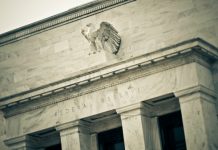Retail sales rose 0.6% month-on-month (m/m) in February, reversing most of January’s -1.1 % decline (revised from -0.8% previously). This was lower than the consensus forecast calling for slightly stronger growth of 0.8%.
Trade in the auto sector was up 1.6% m/m, reflecting an increase in sales at motor vehicle dealers (1.8%) which was partly offset by a decline in automotive parts and accessory stores (-0.5%).
Sales at gasoline stations broke four consecutive months of decline, rising by 0.9% m/m. This largely reflected an uptick in gas prices. The building materials and equipment category rose by a notable 2.2% m/m.
Sales in the retail sales “control group”, which excludes the above volatile components (autos, building materials and gas) and is used to estimate personal consumption expenditures (PCE) was flat on the month after falling by -0.3% m/m in January (revised from -0.4% previously).
- Among the control group, positive contributions came from miscellaneous store retailers (0.6% m/m), department stores (0.4%) and food and beverage stores (0.1% m/m). Sales at sporting goods stores were flat on the month.
- All the remaining categories registered declines. Clothing and accessory stores registered the largest decline of -0.5% m/m.
Food services & drinking places – the only services category in the retail sales report – rose by 0.4% m/m.
Key Implications
Retail spending was back in positive territory in February, after a sizeable decline to start the year. Higher borrowing costs and elevated prices are challenging households but spending is still being fueled by a robust job market and rising wages. However, as the labor market cools and wage gains abate, spending should moderate. With two months of data in for the quarter, consumer spending is currently tracking 2.7% q/q (annualized) for Q1.
The pick-up in retail spending is unlikely to be good news for policymakers at the Federal Reserve. The recent flip in core goods prices from deflation to price growth makes continued buoyant retail sales even more of a challenge to the Fed’s inflation targeting objective. The current near-term headwinds, from both inflation and spending, are likely to keep the Fed on the sidelines for a bit longer as they continue to monitor inflation’s progress to target.











